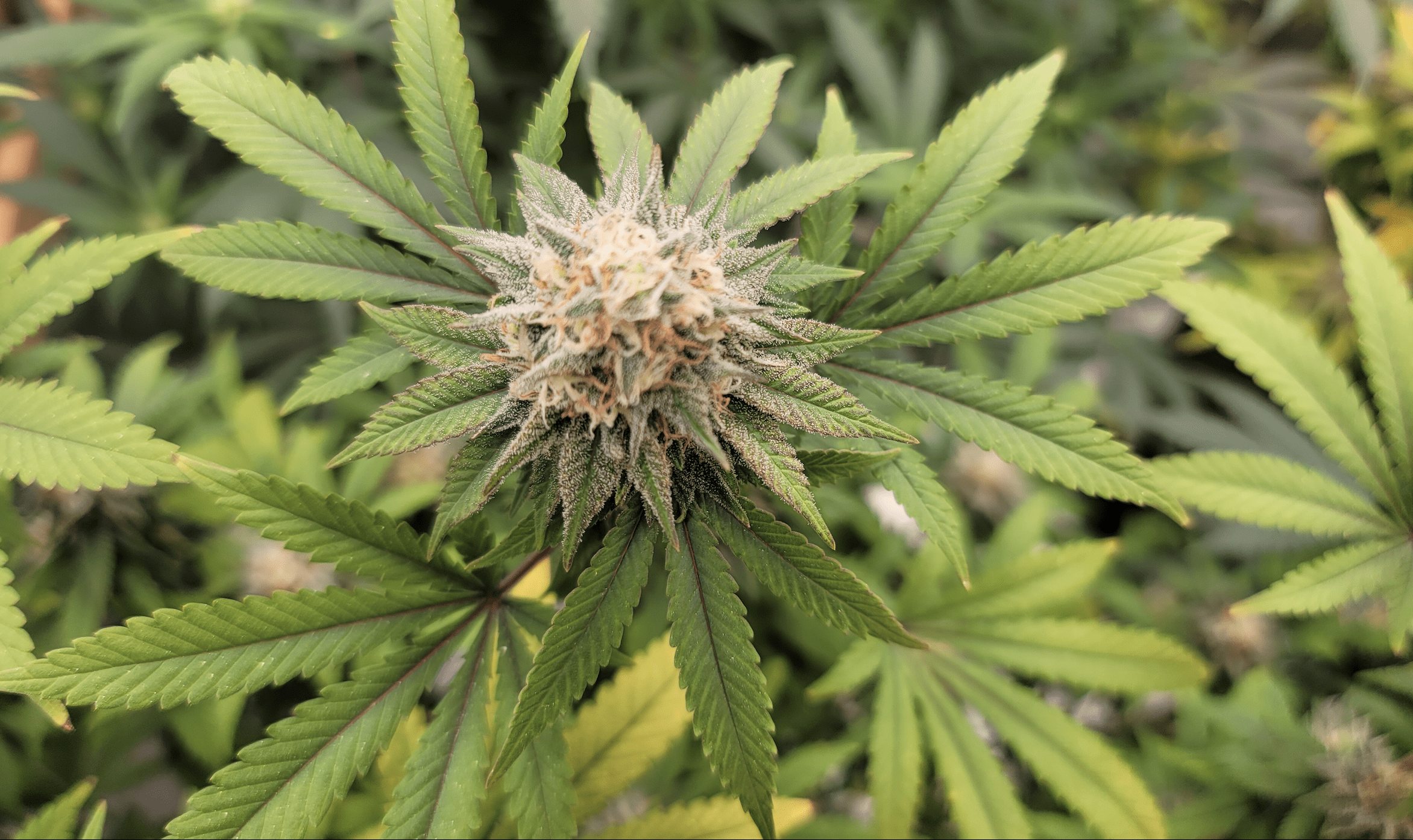Science & Health
Researchers Announce They’ve Discovered A New Cannabinoid In Marijuana

Researchers have announced that they’ve successfully identified a new cannabinoid—cannabielsoxa—produced by the marijuana plant as well as a number of other compounds “reported for the first time from the flowers of C. sativa.”
The team of government and university researchers out of South Korea also evaluated 11 compounds in cannabis for antitumor effects in neuroblastoma cells, finding that seven “revealed strong inhibitory activity.”
Authors said the findings represent “an initial step toward developing a product for the treatment of neuroblastoma,” a cancer they note “is the most common solid tumor in children and the most frequent malignancy in the first year of life.”
Published this month in the journal Pharmaceuticals, the paper says researchers used chromatographic techniques to isolate the compounds. They then examined their molecular structures and used a metabolic testing method to assess their toxicity to neuroblastoma cells.
“This study successfully isolated a new cannabinoid and six known cannabinoid compounds, along with a new chlorin-type compound and three additional chlorine-type compounds,” the study says, “which were reported for the first time from the flowers of C. sativa.”
Two of the compounds identified for the first time in cannabis—132-hydroxypheophorbide b ethyl ester and ligulariaphytin A—are described as “chlorin-type compounds.”
They, along with five other known cannabinoids—cannabidiol (CBD), cannabidiolic acid (CBDA), cannabidiolic acid methyl ester (CBDA-ME), delta-8 THC and cannabichromene (CBG)—”could be considered as the potential compounds for antitumor effects against neuroblastomas,” researchers found.
Results of the antitumor analyses “demonstrated that cannabinoid compounds had stronger inhibitory effects on neuroblastoma cells than chlorin-type compounds,” the paper notes.
The new cannbinoid, cannabielsoxa, was not among the compounds that researchers identified as potentially toxic to neuroblastoma cells, however.
The study was authored by a 14-person team representing government agencies and universities, including Wonkwang University, the Korean Ministry of Food and Drug Safety, Kyung Hee University, Kookmin University and the National Institute of Horticultural and Herbal Science.
Also this month, U.S.-based researchers published what they described as the “largest meta-analysis ever conducted on medical cannabis and its effects on cancer-related symptoms,” finding “overwhelming scientific consensus” on marijuana’s therapeutic effects.
The study, published in the journal Frontiers in Oncology, analyzed data from 10,641 peer-reviewed studies—what authors say is more than ten times the number in the next-largest review on the topic. Results “indicate a strong and growing consensus within the scientific community regarding the therapeutic benefits of cannabis,” it says, “particularly in the context of cancer.”
Given what the report calls a “scattered and heterogenous” state of research into the therapeutic potential of marijuana, authors aimed to “systematically assess the existing literature on medical cannabis, focusing on its therapeutic potential, safety profiles, and role in cancer treatment.”
“We expected controversy. What we found was overwhelming scientific consensus,” lead author Ryan Castle, head of research at Whole Health Oncology Institute, said in a statement. “This is one of the clearest, most dramatic validations of medical cannabis in cancer care that the scientific community has ever seen.”
The meta-analysis “showed that for every one study that showed cannabis was ineffective, there were three that showed it worked,” the Whole Health Oncology Institute said in press release. “That 3:1 ratio—especially in a field as rigorous as biomedical research—isn’t just unusual, it’s extraordinary.”
The institute added that the “level of consensus found here rivals or exceeds that for many [Food and Drug Administration]-approved medications.”
A separate study of medical marijuana patients in Minnesota, published in February, found that people with cancer who used cannabis reported “significant improvements in cancer-related symptoms.” But it also noted that the high cost of marijuana can be burdensome to less financially stable patients and raise “questions about affordability of and access to this therapy.”
The National Cancer Institute (NCI) late last year estimated that between about 20 percent and 40 percent of people being treated for cancer are using cannabis products to manage side effects from the condition and associated treatment.
“The growing popularity of cannabis products among people with cancer has tracked with the increasing number of states that have legalized cannabis for medical use,” the agency said. “But research has lagged on whether and which cannabis products are a safe or effective way to help with cancer-related symptoms and treatment-related side effects.”
Included in the research cited in the NCI post was a series of scientific reports published in the journal JNCI Monographs. That package of 14 articles detailed the results of broad, federally funded cannabis surveys of cancer patients from a dozen agency-designated cancer centers across the country—including in areas where marijuana is legal, permitted only for medical purposes or still outlawed.
In all, just under a third (32.9 percent) of patients reported using cannabis, with respondents reporting that they used marijuana primarily to treat cancer- and treatment-related symptoms such as difficulty sleeping, pain and mood changes. The most common perceived benefits “were for pain, sleep, stress and anxiety, and treatment side effects,” the report says.
Separately, another recent study, in the journal Discover Oncology, concluded that a variety of cannabinoids—including delta-9 THC, CBD and cannabigerol (CBG)—“show promising potential as anticancer agents through various mechanisms,” for example by limiting the growth and spread of tumors. Authors acknowledged that obstacles to incorporating cannabis into cancer treatment remain, however, such as regulatory barriers and the need to determine optimal dosing.
Other recent research on the possible therapeutic value of lesser-known compounds in cannabis found that a number of minor cannabinoids may have anticancer effects on blood cancer that warrant further study.
While cannabis is widely used to treat certain symptoms of cancer and some side-effects of cancer treatment, there’s long been interest in the possible effects of cannabinoids on cancer itself.
As a 2019 literature review found, the majority of the studies have been based on in vitro experiments, meaning they did not involve human subjects but rather isolated cancer cells from humans, while some of the research used mice. Consistent with the latest findings, that study found cannabis showed potential in slowing the growth of cancer cells and even killing cancer cells in certain cases.
A separate study found that some cases, different types of cancer cells affecting the same part of the body appeared to respond differently to various cannabis extracts.
A scientific review of CBD last year also touched on “the diverse anticancer properties of cannabinoids” that the authors said present “promising opportunities for future therapeutic interventions in cancer treatment.”
Research from 2023 also found that marijuana use was associated with improved cognition and reduced pain among cancer patients and people receiving chemotherapy
While cannabis produces intoxicating effects, and that initial “high” can temporarily impair cognition, patients who used marijuana products from state-licensed dispensaries over two weeks actually started reporting clearer thinking, the study from the University of Colorado found.
Other research in 2023, published by the American Chemical Society, identified “previously undiscovered cannabis compounds” that challenged conventional wisdom of what really gives cannabis varieties their unique olfactory profiles.
The National Institutes of Health in 2023 awarded researchers $3.2 million to study the effects of using cannabis while receiving immunotherapy for cancer treatment, as well as whether access to marijuana helps reduce health disparities.
On the political side, President Donald Trump’s recent choice to serve as the next White House drug czar has called medical marijuana a “fantastic” treatment option for seriously ill patients and said she doesn’t have a “problem” with legalization, even if she might not personally agree with the policy.
Under the Trump administration, “marijuana” is also now one of nearly two dozen “controversial or high-profile topics” that staff and researchers at the National Cancer Institute (NCI) are required to clear with higher-ups before writing about.
A leaked agency memo put marijuana and opioids on a list along with vaccines, COVID-19, fluoride, measles, abortion, autism, diversity and gender ideology and other issues that are believed to be personal priorities of Health and Human Services Secretary Robert F. Kennedy Jr. and President Trump.
NCI is part of the National Institutes of Health (NIH), which itself is part of the Department of Health and Human Services (HHS).
Prior to publishing anything on the specified topics, NCI staff are required to send the materials to an agency clearance team, says the new memo, first reported by ProPublica.
“Depending on the nature of the information, additional review and clearance by the NCI director, deputy directors, NIH, and HHS may be required,” it advises staff. “In some cases, the material will not need further review, but the NCI Clearance Team will share it with NCI leadership, NIH, and/or HHS for their awareness.”
Photo courtesy of Mike Latimer.



